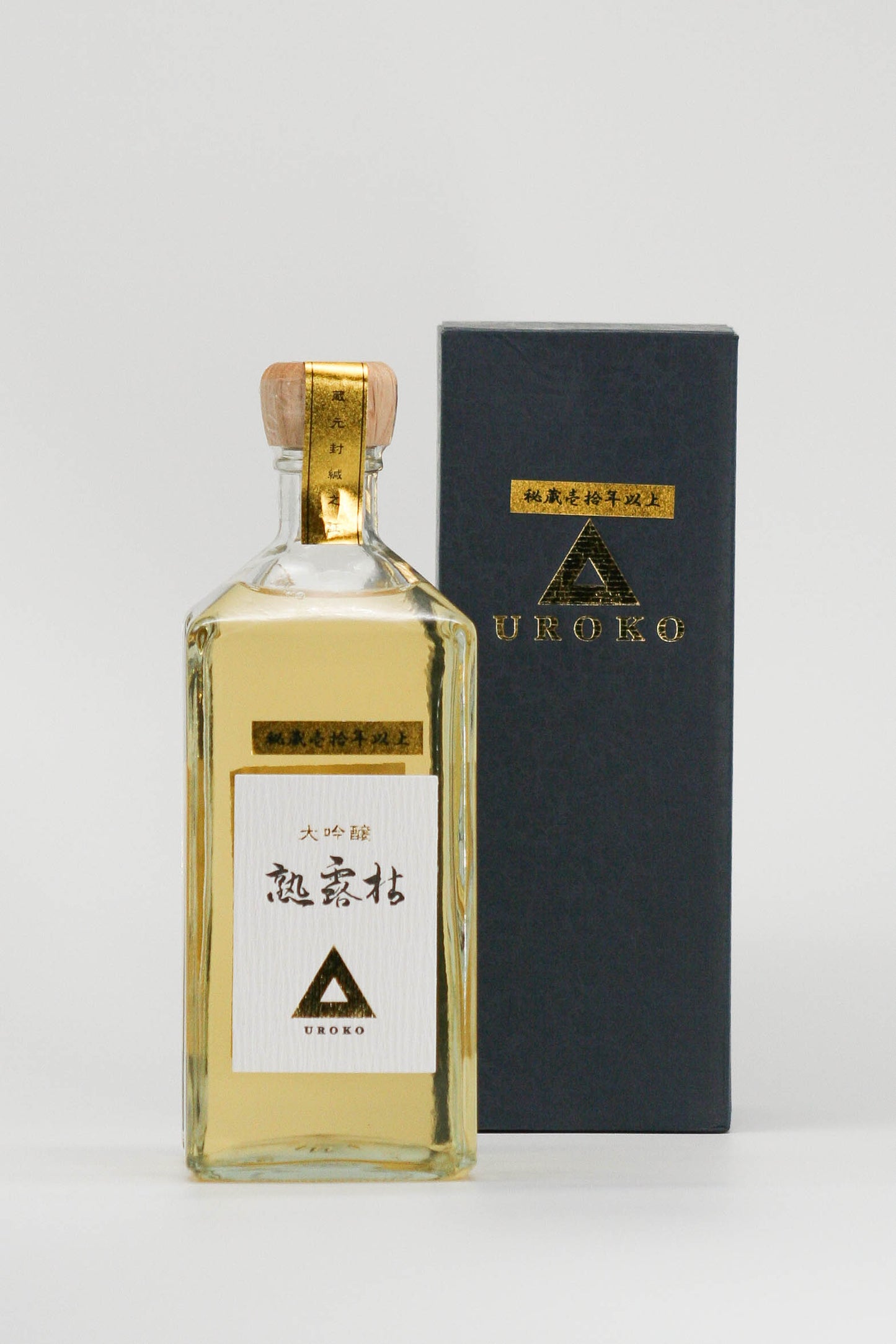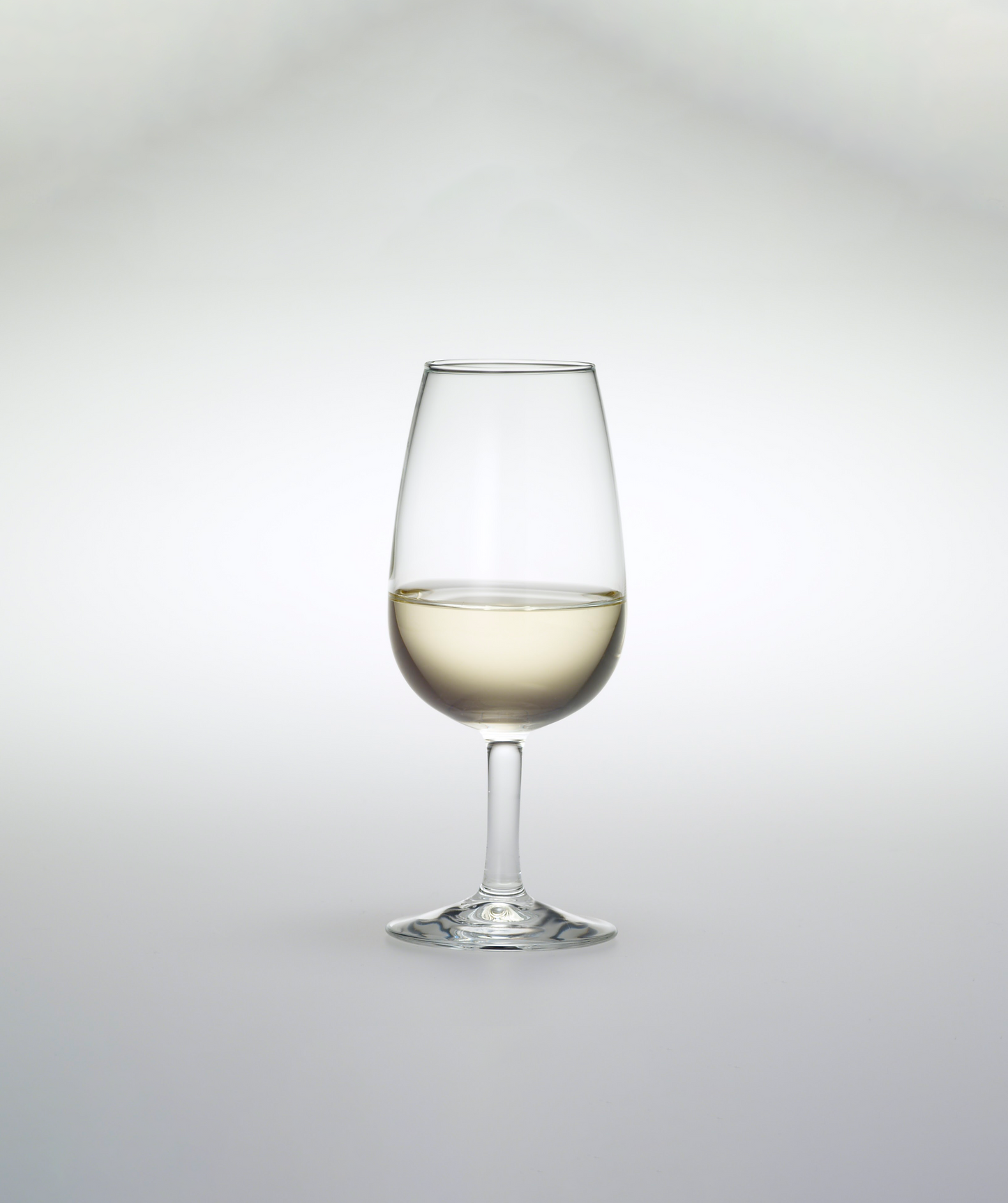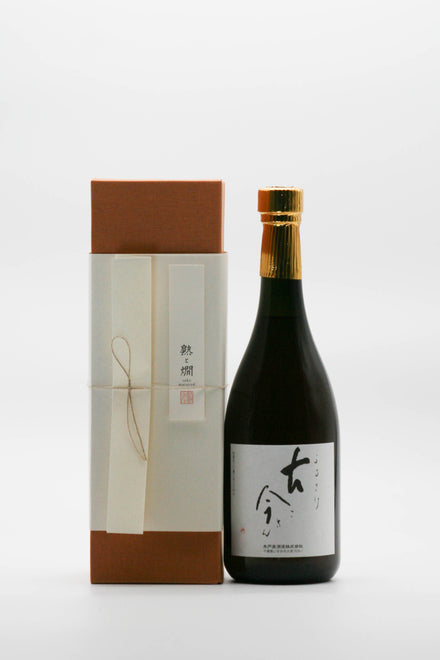


Daiginjo, created for competitions, is stored for a long time in a cave to produce a mellow yet complex profile. At the first tasting in 2023, this sake received a top-class rating from multiple tasters and the Sakematured.com 3 Glass Award.
Uroko Daiginjo 10 years or more
| Vintage | - |
| Years aged | over 10 years |
- 10 years or more
- 5,000 - 9,999 yen
- All Products
- Light Yellow/Green
- Non-vintage
- Throughout the meal
- With dessert and/or as an after-dinner drink
- Brewer:
- Alcohol:17 degrees
- Volume:720ml
Couldn't load pickup availability
[ Drinking alcohol under the age of 20 is prohibited by law. ]
Shimazaki Sake Brewery in Tochigi Prefecture has been storing competition Daiginjo sake since 1970.
Their unique maturation method of storing in a cave (*) which maintains a temperature range of 15℃ in summer, 5℃ in winter, and an annual average of 10℃—preventing overmaturation—creates a long-matured Daiginjo with an elegant, delicate, and complex flavor profile.
It has a mellow texture and an elegant, long finish, which you can enjoy on its own or with strong-flavored dishes.
*The Cave Storage is the site of a factory that was dug into the side of a mountain to manufacture tanks at the end of World War II.
Approximately 100,000 bottles of sake, ranging from short-term to long-term maturation, are matured in an environment similar to the world's finest wine caves in a 600m-long space intersecting eight caves.
- about
-
Type 大吟醸 Rice polishing ratio 40% Yeast type - Ingredients/raw materials Rice (domestic rice), rice koji (domestic), brewed alcohol Rice type Yamada Nishiki Origin of rice Hyogo prefecture Toji(Brew Master) - Assemblage 有
- Recommended occasions/temperature
-
- How to store
-
- Delivery dates and charges
-



Tasting comments
-
Nobuhiro Ueno
(Juku to Kan Bar Master / Permanent Director of the Toki Sake Association)A fragrance reminiscent of sweet apricots and white flowers that is typical of a matured Ginjo-style sake. When you drink it, the sweetness spreads throughout your mouth, and the umami flavor kicks in afterwards.It has a beautiful finish and a glamorous taste. The aftertaste is long and can be enjoyed on its own.
-
Hidekazu Ishiwata
(Former National Tax Bureau Chief Appraiser)Pale yellow. A light caramel scent at the top.
The sweetness of sotolon (caramel-like) and the nuances of chocolate and nuts.
The taste is ripe and sweet, like dried fruit, with an elegant finish. -
Akiko Toda
(Director of ITTEKI, Japan Sake and Meat Research Institute)Elegant aromas of nuts, dried figs, and flowers.
When you put it in your mouth, it's smooth and the sweetness spreads across your tongue, giving it a melt-in-your-mouth texture.
The second half is balanced and tightened by a touch of bitterness and light acidity. This sake doesn't need to be served with food to work its magic. -
Yuji Yamauchi
(Yushima Tenjinshita Sushi Hatsu 4th generation / 1st JSA SAKE DIPLOMA competition winner)It's fragrant but not overly rich and creamy.
Reminds me of custard cream.
The length of the aftertaste is full and elegant.
Brewer
- Choosing a selection results in a full page refresh.
- Opens in a new window.



